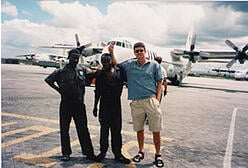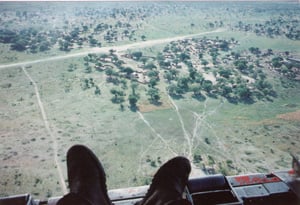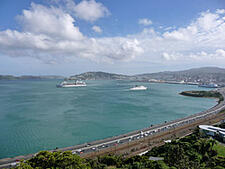 In 1978, Phil Porter was hired as Duncan Aviation’s first logistics manager; although, at the time, he was called a parts runner. Nearing the completion of his fourth decade at Duncan Aviation, Phil took some time to reflect on his long tenure with the company.
In 1978, Phil Porter was hired as Duncan Aviation’s first logistics manager; although, at the time, he was called a parts runner. Nearing the completion of his fourth decade at Duncan Aviation, Phil took some time to reflect on his long tenure with the company.
“I was going to UNL when my girlfriend Cindy took me up in her Cessna 150,” says Phil. “We dropped in on the Duncan Aviation ramp, and I was enamored of the place. Right then, I decided I wanted to be a part of it, so I changed my plans to head home to the Chicago area. Cindy and I got married, and I applied here for a job.”
Phil was both the aircraft parts runner and the shipping department back then, and he had to physically search shelves for parts. There were no computers or inventory control back then.
“And I personally packed up and shipped everything that left the company,” says Phil. “I’d call Trailways bus to find out the schedule and then drive the packages to the depot.”
One time Phil was unable to find a way to ship the horizontal stabilizer to Wichita, Kansas, for singer Paul Anka’s Learjet, so he packed it into his car and drove it there himself. Leaving Lincoln at 5:30 a.m. on a Saturday morning, Phil arrived at the Learjet facility about five hours later. He drove up to the main hangar, parked in the late Harry B. Combs’ [President of Learjet from 1971 until 1982] parking space, and looked for someone to help unload the stabilizer.
Although driving a stabilizer from one state to the next was somewhat unusual for a parts runner, Phil’s story illustrates how Duncan Aviation and its team members literally go the extra mile for customers.
Shipping parts to Mexico, Canada or anywhere in the world in the late 1970s was fairly unusual, too, because most of Duncan Aviation’s parts business involved Learjet aircraft, and Phil remembers that those parts shipped primarily in the United States.
There were notable exceptions, however, and in 1966, 10 years after Donald Duncan founded Duncan Aviation, Donald and Harry Barr partnered with Danish Pilot Captain Per Alkaersig to supply radio packages for Cessna aircraft that flew in the Scandinavian countries.
“I looked for a supplier of King radios and found Duncan Aviation. They would pick up the aircraft in Wichita and have it ready to ferry to Europe on a firm date,” says Per. “When I’d pick up the aircraft in Lincoln, I’d meet Donald and Robert Duncan and Harry Barr. What a great team! A handshake would close a deal.”
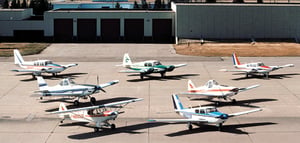 When Duncan Aviation won the exclusive rights as master distributor for Piper (including Aztecs and Cubs) parts, Duncan Aviation began regularly shipping parts worldwide.
When Duncan Aviation won the exclusive rights as master distributor for Piper (including Aztecs and Cubs) parts, Duncan Aviation began regularly shipping parts worldwide.
“Through our Piper parts agreement, I meet not only Piper dealers in Pennsylvania and Florida, but also made connections with companies in places like England, South Africa and Sweden,” says Phil. “We started dealing those parts in 1984, and we shipped quite a lot to Italy and Madagascar and to all of the little mom and pop shops around the world that needed parts for Pipers.”
Although Phil had been promoted from parts runner to sales around 1981, the worldwide parts distribution took off with the Piper deal, and in 1984, Duncan Aviation’s AvPac was born. Now known as Parts and Rotables, the annual sales of parts outside of the United States represents about 35 percent of all parts and rotables sales.
“Today, roughly one third of our team members work hours to accommodate our worldwide customers,” says Chris Gress, Manager of Parts and Rotables Sales.
Shirley Crouch and Tyler Stone work through the night so they can answer calls from customers in Australia and southeast Asia; Carol Hunt and Hannah Bodenstab support customers in South Africa; and Phil, Lance Tophoj, Jewell Chambers and Sandra Phelps support customers in Europe and South America. Sandra begins working at 4 a.m. so European customers can reach an actual person at the start of their business day.
In the early day, Phil sold Piper parts, and one of his first customers was Pilot John Egelykke who worked for a pump factory in Denmark called Grundfos. Per introduced John to Duncan Aviation in 1986, and John has been working with the company at its various locations ever since.
“The European aviation industry is a closely knit community. When you help customers locate parts or resolve problems, they remember you,” says Phil. “Over the years, in spite of the fact that some of my best customers have switched from one company to another, they remember that I helped, and they continue to call.”
John got to know Phil shortly after his first experience working with Duncan Aviation.
“Phil has been a great person to work with over the years. He has helped me a lot with AOG parts and a great number of quotes,” says John. “When Grundfos changed their aircraft management company to Air Alsie in 2011, I suggested taking the Falcon 2000 to Battle Creek for a C-check. I have always enjoyed working with Shawn Busby and Tom Burt, too.”
John stopped flying after 30 years and 14,000 hours as a pilot, and he now works as a Technical Advisor for Air Alsie. And he still recommends Duncan Aviation to his customers in large part because Phil took the time to forge a friendship on top of the business relationship the two men developed so many years ago.
2016 is a special year. It is Duncan Aviation’s 60th year of helping business aircraft operators be safe, efficient and productive. For six decades, customers have asked us for solutions and services. We are celebrating our 60 years by telling the stories about the people of Duncan Aviation who listened and took action.
Celebrate with us by subscribing to the Duncan Download blog, following us on Facebook and Twitter (@DuncanAviation) and visiting our anniversary website at www.DuncanAviation.aero/60.
Lori Johnson has been the Marketing Communications Manager for Duncan Aviation for more than 20 years. She enjoys working with the smart and passionate aviation experts at Duncan Aviation, helping them connect with and educate customers about important industry topics.
 The start of 2018 was a real whirlwind with a significant increase in deals, reducing inventory, and just about every broker attending Corporate Jet Investor London at the end of January was talking of a real market shift. At long last we were starting to see that buyers had choices. So did sellers. There was even bullish talk of it being a buyer’s market. In reality, then, as it is now, there are sectors of the market that are performing extremely well while a few are still lagging behind.
The start of 2018 was a real whirlwind with a significant increase in deals, reducing inventory, and just about every broker attending Corporate Jet Investor London at the end of January was talking of a real market shift. At long last we were starting to see that buyers had choices. So did sellers. There was even bullish talk of it being a buyer’s market. In reality, then, as it is now, there are sectors of the market that are performing extremely well while a few are still lagging behind.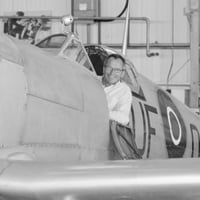 At Duncan Aviation we have had a promising start to the year and have seen a good number of sales and acquisitions complete during the first quarter. As a result of this, we are busy looking for new opportunities to sell aircraft. If you feel that Duncan Aviation can assist you in the sale or purchase of an aircraft for you, please don’t hesitate to get in touch.
At Duncan Aviation we have had a promising start to the year and have seen a good number of sales and acquisitions complete during the first quarter. As a result of this, we are busy looking for new opportunities to sell aircraft. If you feel that Duncan Aviation can assist you in the sale or purchase of an aircraft for you, please don’t hesitate to get in touch.


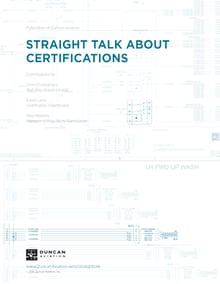
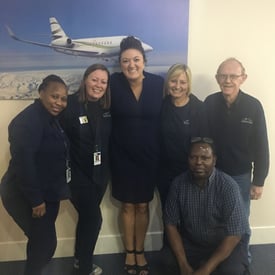

 What is your impression of the international aviation marketplace?
What is your impression of the international aviation marketplace? Anything else you’d like to add about this experience?
Anything else you’d like to add about this experience?

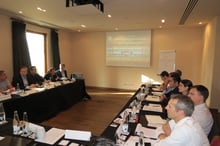 The board was created due to our commitment to our customers and to improve service. It represents various business jet stakeholders who provide a broad perspective of the industry. Board members play a big role in exchange of information about important industry and service issues. This dialogue is extremely important to us as it depends heavily on ECAB’s input when making critical decisions related to the business.
The board was created due to our commitment to our customers and to improve service. It represents various business jet stakeholders who provide a broad perspective of the industry. Board members play a big role in exchange of information about important industry and service issues. This dialogue is extremely important to us as it depends heavily on ECAB’s input when making critical decisions related to the business.
 In 1978, Phil Porter was hired as Duncan Aviation’s first logistics manager; although, at the time, he was called a parts runner. Nearing the completion of his fourth decade at Duncan Aviation, Phil took some time to reflect on his long tenure with the company.
In 1978, Phil Porter was hired as Duncan Aviation’s first logistics manager; although, at the time, he was called a parts runner. Nearing the completion of his fourth decade at Duncan Aviation, Phil took some time to reflect on his long tenure with the company. When Duncan Aviation won the exclusive rights as master distributor for Piper (including Aztecs and Cubs) parts, Duncan Aviation began regularly shipping parts worldwide.
When Duncan Aviation won the exclusive rights as master distributor for Piper (including Aztecs and Cubs) parts, Duncan Aviation began regularly shipping parts worldwide. On a Saturday…
On a Saturday… Jewell and her grandson, Riley, celebrating his fifth birthday.
Jewell and her grandson, Riley, celebrating his fifth birthday.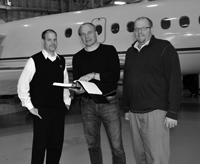 L to R:
L to R: 
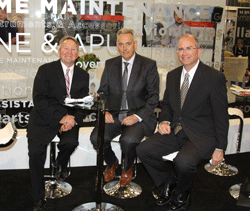
 They wanted to know why they should fly their aircraft to the other side of the pond to have service performed. In the beginning, Arjen admits that the euro to dollar exchange rate (near 1.5) in 2011 had a huge impact on getting business in the door.
They wanted to know why they should fly their aircraft to the other side of the pond to have service performed. In the beginning, Arjen admits that the euro to dollar exchange rate (near 1.5) in 2011 had a huge impact on getting business in the door. Arjen Groeneveld, European Regional Manager.
Arjen Groeneveld, European Regional Manager.